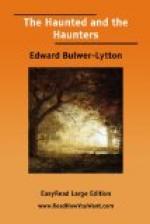45. Denis Misanger 362
46. The pied piper 365
47. Jeanne D’ARC 367
48. Anne Walker 368
49. The hand of glory 371
50. The bloody footstep 375
51. The ghostly warriors of worms 378
52. The wandering Jew in England 379
53. BENDITH EU MAMMAU 382
54. The red book of Appin 385
55. The good O’DONOGHUE 387
56. Sarah Polgrain 390
57. Eleanor Cobham, duchess of Gloucester 393
INTRODUCTION
In this Ghost Book, M. Larigot, himself a writer of supernatural tales, has collected a remarkable batch of documents, fictive or real, describing the one human experience that is hardest to make good. Perhaps the very difficulty of it has rendered it more tempting to the writers who have dealt with the subject. His collection, notably varied and artfully chosen as it is, yet by no means exhausts the literature, which fills a place apart with its own recognised classics, magic masters, and dealers in the occult. Their testimony serves to show that the forms by which men and women are haunted are far more diverse and subtle than we knew. So much so, that one begins to wonder at last if every person is not liable to be “possessed.” For, lurking under the seeming identity of these visitations, the dramatic differences of their entrances and appearances, night and day, are so marked as to suggest that the experience is, given the fit temperament and occasion, inevitable.
One would even be disposed, accepting this idea, to bring into the account, as valid, stories and pieces of literature not usually accounted part of the ghostly canon. There are the novels and tales whose argument is the tragedy of a haunted mind. Such are Dickens’ Haunted Man, in which the ghost is memory; Hawthorne’s Scarlet Letter, in which the ghost is cruel conscience; and Balzac’s Quest of the Absolute, in which the old Flemish house of Balthasar Claes, in the Rue de Paris at Douai, is haunted by a daemon more potent than that of Canidia. One might add




